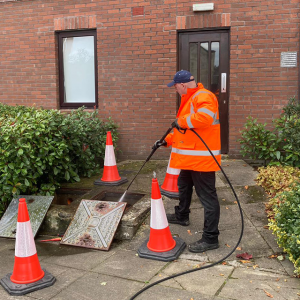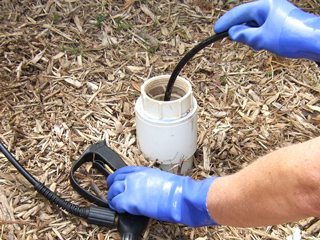
Treatment of dirtied water
Play out the accompanying movement
More Information should know to maintain the waste properly.

It will assist you with understanding the cycles that occur at the wastewater treatment plant Divide yourself into gatherings to play out the movement. Record perceptions at each stage:
- Fill an enormous glass container 3/4 loaded with water. Add some filthy natural matter, for example, grass pieces or orange strips, a modest quantity of cleanser, and a couple of drops of ink or any tone.
- Cap the container, shake it well, and let the blend stand in the sun for two days.
- The following day when air circulation is finished, empty one more example into a subsequent test tube. Mark it as “After air circulation; Sample 2”.
- Overlap a piece of channel paper to frame a cone. Wet the paper with faucet water and afterward embed the cone in a channel. Mount the pipe on a help (as you have learned in Class VI).
- Place layers of sand, fine rock lastly medium rock in the channel. (A genuine filtration plant doesn’t utilize channel paper, however, the sand channel is a few meters down).
- Pour the excess circulated air through fluid through the channel into the measuring glasses.
Try not to permit the fluid to pour out over the channel. On the off chance that the sifted fluid isn’t clear, channel it a couple of times till you get clear water.
- Pour an example of the sifted water into a third test tube marked “Separated; Sample 3”. Pour one more example of the separated water into a fourth test tube. Add a little piece of a chlorine tablet. Blend well until the water is clear. Name the test tube “Chlorinated; Sample 4”.
- Notice cautiously the examples in all the test tubes. Try not to taste it! Simply smell them!
Presently answer the accompanying inquiries:
(a) What changes did you see in the presence of the fluid after air circulation?
(b) Did air circulation change the scent?
(c) What was taken out by the sand channel?
(d) Did chlorine eliminate the variety?
(e) Did chlorine have a scent? Was it more awful than the wastewater?
Wastewater treatment plant (WWTP)
Treatment of wastewater includes physical, compound, and natural cycles, which eliminate physical, synthetic, and organic matter that sullies the wastewater.
- Wastewater is gone through bar screens. Huge items like clothes, sticks, jars, plastic parcels and napkins are taken out.
- Water then goes to a coarseness and sand evacuation tank. The speed of the approaching wastewater is diminished to permit sand, coarseness, and rocks to settle down.
- The water is then permitted to get comfortable in a huge tank that is inclined towards the center. Solids like dung settle at the base and are taken out with a scrubber. This is the muck. A skimmer eliminates the floatable solids like oil and oil. Water so cleared is called explained water. The ooze is moved to a different tank where it is disintegrated by the anaerobic microscopic organisms. The biogas created in the process can be utilized as fuel or can be utilized to deliver power.
